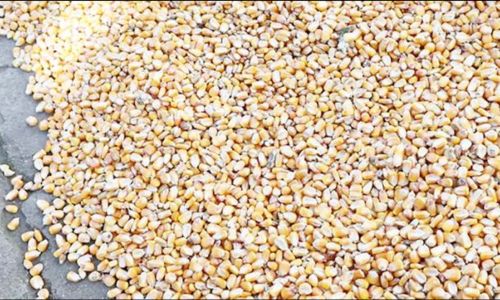Grains such as rice, wheat, oats, and corn form the backbone of global diets, providing essential nutrients and energy. However, preserving these staples without infestation remains a persistent challenge for households, farmers, and food storage facilities alike. Insects like weevils, moths, and beetles can infiltrate grain supplies, leading to contamination, spoilage, and economic loss. This article explores actionable, science-backed methods to safeguard grains from pests, ensuring longevity and maintaining nutritional value. By combining traditional wisdom with modern techniques, anyone can adopt these practices to protect their grain reserves effectively.
Understanding the Enemy: Common Grain Pests
Before diving into prevention strategies, it is crucial to identify the adversaries. The most prevalent grain pests include:
- Rice Weevils (Sitophilus oryzae): Small, reddish-brown beetles that lay eggs inside grain kernels.
- Indian Meal Moths (Plodia interpunctella): Grayish moths whose larvae spin silk webs in stored grains.
- Granary Weevils (Sitophilus granarius): Similar to rice weevils but larger, with a darker hue.
- Flour Beetles (Tribolium spp.): Reddish-brown insects that thrive in flour and processed grains.
These pests reproduce rapidly in warm, humid environments, making storage conditions critical. A single female weevil can lay up to 400 eggs in her lifetime, highlighting the importance of proactive measures.
The Foundation: Proper Grain Selection and Cleaning
The first line of defense begins at the point of purchase or harvest.

- Source Quality Grains: Buy grains from reputable suppliers who follow strict hygiene standards. Avoid bulk bins in stores if you suspect poor sanitation.
- Inspect for Damage: Check for holes, discoloration, or unusual odors—signs of existing infestation.
- Clean Thoroughly: Before storage, remove debris, chaff, and broken grains using a sieve. Pests often target damaged kernels first.
For farmers, post-harvest cleaning using machines or manual winnowing is essential to eliminate contaminants.
Storage Containers: The Ultimate Barrier
The right container can make or break grain preservation efforts.
- Airtight Containers: Opt for glass jars, metal cans, or food-grade plastic buckets with tight-fitting lids. Airtight environments suffocate insects and prevent moisture ingress.
- Vacuum Sealing: For long-term storage, vacuum-sealing bags remove oxygen, halting pest reproduction.
- Avoid Sacks and Burlap: These materials allow pests to enter and exit freely. If unavoidable, line them with plastic sheets.
Temperature and Humidity Control
Insects thrive in warmth and moisture. Manipulating these factors can deter infestations.
- Cool Storage: Store grains in a cool, dry place—ideally below 21°C (70°F). Basements or pantries with consistent temperatures work best.
- Freeze Small Quantities: For home use, freezing grains for 4–7 days kills eggs and larvae. Thaw completely before use.
- Dehumidify: Use silica gel packets or electric dehumidifiers to maintain humidity below 15%. High humidity accelerates mold growth and pest activity.
Natural Repellents: Harnessing Nature’s Arsenal
Certain plants and minerals deter pests without chemicals.
- Bay Leaves: Place dried bay leaves among grains. Their aromatic compounds repel weevils and moths.
- Neem Leaves or Oil: Neem’s bitter taste and azadirachtin compound disrupt insect growth. Mix a few drops of neem oil with grains or hang neem-filled sachets.
- Cloves and Garlic: These pungent spices act as natural deterrents. Insert whole cloves or garlic cloves into grain piles.
- Diatomaceous Earth (Food-Grade): A powder made from fossilized algae. Its microscopic edges pierce insect exoskeletons, causing dehydration. Sprinkle lightly—avoid inhaling.
Solarization and Heat Treatment
Sunlight and controlled heat can sterilize grains.
- Solar Exposure: Spread grains in a thin layer under direct sunlight for 3–5 hours. UV rays kill eggs and adults. Cover with a mesh to prevent birds from feeding.
- Oven Drying: For small batches, bake grains at 60°C (140°F) for 30 minutes. Monitor closely to avoid cooking.
Rotation and Regular Inspection
Even with precautions, vigilance is key.
- First-In, First-Out (FIFO): Use older grains first to prevent prolonged storage. Label containers with purchase dates.
- Monthly Checks: Inspect for webbing, larvae, or adult insects. Shake containers to dislodge hidden pests.
- Freeze New Purchases: Quarantine newly bought grains in the freezer for a week before adding them to existing stock.
Chemical-Free Alternatives for Large-Scale Storage
Farmers and commercial storage units require robust solutions.

- Hermetic Storage: Airtight silos or bags create an anaerobic environment, killing pests through oxygen deprivation.
- Biopesticides: Apply entomopathogenic fungi (e.g., Beauveria bassiana) or nematodes that target insects without harming humans.
- Controlled Atmosphere: Replace oxygen with nitrogen or carbon dioxide to suffocate pests.
The Role of Pheromone Traps
For monitoring and early detection, use pheromone lures. These sticky traps attract male moths or beetles, disrupting mating cycles. Replace traps every 6–8 weeks.
Educating and Involving the Community
Grain preservation is a collective effort.
- Workshops: Teach farmers about integrated pest management (IPM) techniques.
- Local Initiatives: Promote community grain banks with standardized storage protocols.
Conclusion: A Holistic Approach to Grain Preservation
Preserving grains without infestation demands a multi-layered strategy. By combining proper cleaning, airtight storage, temperature control, and natural repellents, individuals and communities can significantly reduce waste and ensure food security. Regular monitoring and adaptation to local conditions—such as humidity levels or pest species—further enhance effectiveness.
In an era marked by climate change and supply chain disruptions, mastering grain preservation is not merely a domestic skill but a vital step toward sustainability. Whether you’re a home cook storing rice or a farmer safeguarding harvests, these methods offer a roadmap to outsmart pests and preserve one of humanity’s most precious resources.
Final Tip: Experiment with combinations of these tactics. For example, freeze grains, store them in airtight jars with bay leaves, and keep them in a cool, dark cupboard. Such synergy often yields the best results. With patience and persistence, you’ll master the art of pest-free grain preservation.





0 comments